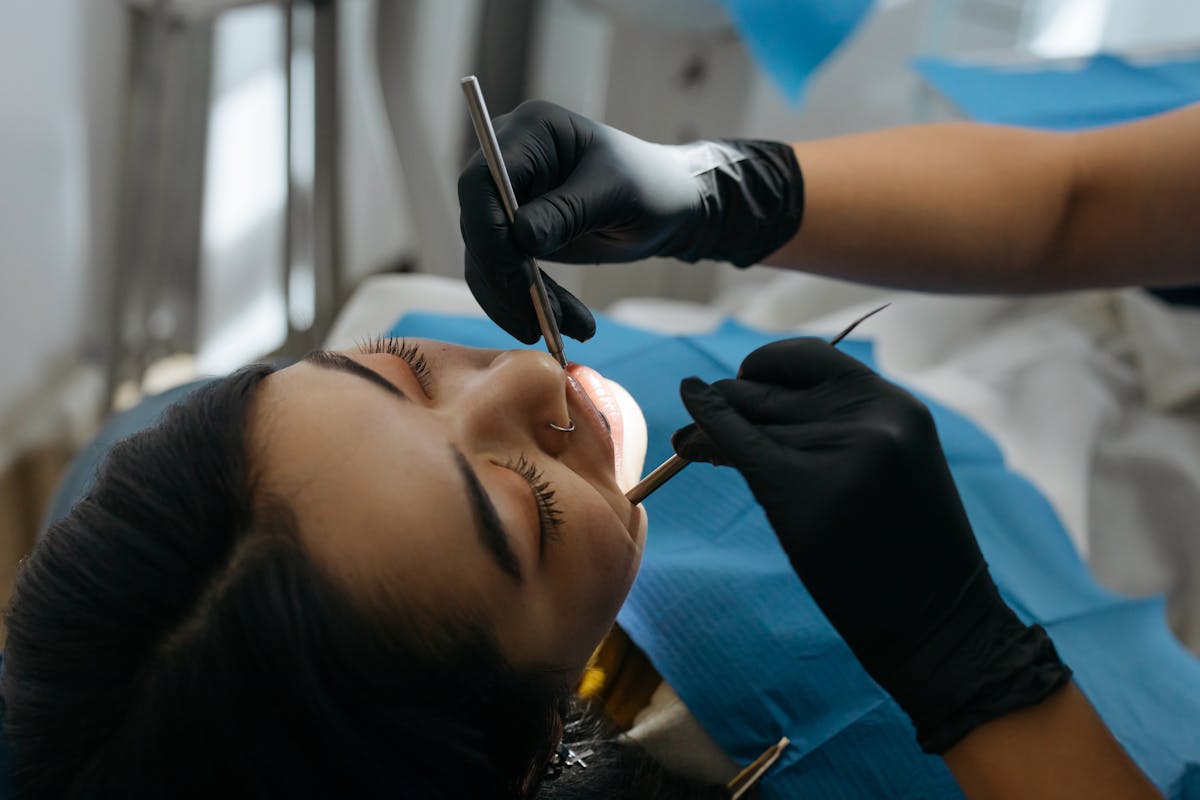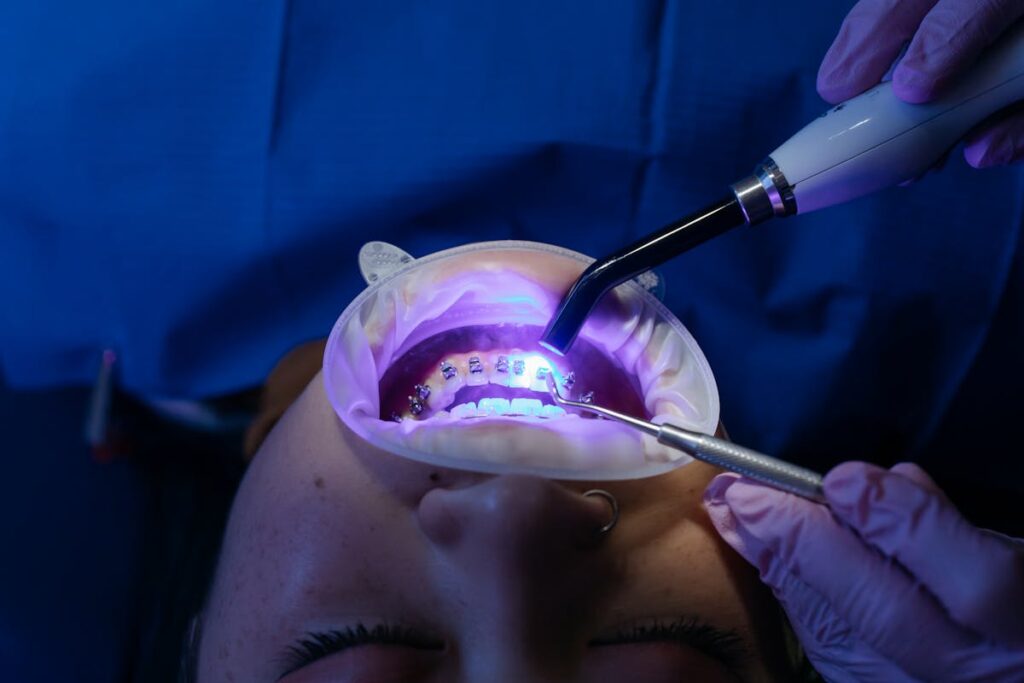Seattle, known for its technological advancements and natural beauty, is also becoming a hub for superior periodontal treatments for healthy gums. The dental community here emphasizes early detection and employs extensive treatments, including innovative methods like laser gum therapy and guided tissue regeneration. The city’s commitment to maintaining oral health extends to judicious use of antibiotics and a strong focus on preventive care. This discussion will further explore how these treatments are helping to redefine oral health care in Seattle and why this approach might be the blueprint for future dental care.
Understanding Periodontal Disease
While many might overlook the importance of gum health, understanding periodontal disease is essential to maintaining overall oral hygiene. This condition, characterized by inflammation and infection of the gum tissue, is often a consequence of poor oral care. Key disease symptoms include red, swollen gums, persistent bad breath, and receding gum lines. If left untreated, this can lead to tooth loss, and studies indicate it may also have links to heart disease and diabetes. Understanding the signs of periodontal disease is the first step in prevention and early treatment. Remember, maintaining gum health is not just about preserving your smile, it significantly contributes to your overall health and well-being.
Regular Dental Cleanings
Regular dental cleanings play a critical role in maintaining gum health by preventing periodontal diseases. These scheduled sessions involve a thorough process that guarantees the removal of plaque and tartar, often missed in our daily oral hygiene practices. Let’s explore the importance and the process of these routine cleanings, and how they contribute to preventing gum diseases.
Importance of Dental Cleanings
Despite the misconception that brushing and flossing alone can maintain ideal oral health, professional dental cleanings play a pivotal role in preserving the health of your gums. These procedures go beyond the reach of daily oral hygiene routine, helping to protect gum health by addressing issues such as plaque buildup and gum inflammation, often undetectable to the naked eye.
Regular dental cleanings contribute considerably in the early detection and prevention of gum diseases, reducing the risk of tooth loss over time. Furthermore, they can also unearth signs of other systemic health issues, including diabetes and heart disease. By scheduling regular dental cleanings, you’re investing not only in your oral health but also your overall well-being.
Process of Dental Cleanings
Undeniably, the process of dental cleanings encompasses more than just the simple act of brushing or flossing. It is a vital routine aimed at improving both dental hygiene and overall oral health. Regular dental cleanings involve the removal of plaque and tartar, a process known as scaling. This is followed by polishing to remove stains and smooth the tooth surface. Dental professionals may also apply fluoride to strengthen the teeth and prevent cavities. Additionally, dentists conduct a thorough examination of your mouth to detect signs of other oral diseases. This process, while seemingly straightforward, plays an essential role in preventing severe dental issues and maintaining a healthy smile. Its importance in the overall framework of periodontal treatments cannot be overstated.
Preventing Gum Diseases
In order to effectively prevent gum diseases, one cannot underestimate the role of regular dental cleanings. These cleanings are essential in maintaining gum health and promoting ideal oral hygiene. They serve to remove the plaque and tartar build-up, which, if left untreated, can lead to gum diseases like gingivitis or periodontitis. Regular dental cleaning sessions also enable your dentist to diagnose early signs of gum diseases, allowing for prompt treatment and preventing further complications. Furthermore, dental professionals can impart valuable advice on home care techniques to bolster your oral hygiene routine. Consequently, incorporating regular dental cleanings into your health plan is a vital step towards preventing gum diseases and ensuring overall gum health.
Scaling and Root Planing Procedure
Pioneering the path towards healthier gums, the Scaling and Root Planing Procedure stands as a prominent non-surgical treatment approach in periodontal care. This deep-cleaning procedure primarily involves two parts: scaling and root planing. The scaling techniques effectively remove tartar and bacterial plaque from the tooth surfaces and beneath the gum line. Following this, root planing smooths the root’s surfaces to prevent further plaque and tartar buildup, aiding in the healing of inflamed gum tissues. The procedure not only mitigates the signs of gum disease but also prevents its progression. With minimal discomfort and ideal results, the scaling and root planing procedure is a cornerstone in maintaining gum health. It is a reliable step in preserving your smile’s longevity and brilliance.
Laser Gum Therapy Options
Embracing the advancements in dental technology, Laser Gum Therapy presents a revolutionary approach to periodontal treatment. This innovative procedure has several laser technology benefits, including precision in targeting diseased tissues, minimized discomfort, and faster recovery times. Laser Gum Therapy also encourages the natural regeneration of healthy gum tissues, enhancing the overall oral health of patients. The laser treatment effectiveness is particularly notable in cases of moderate to severe periodontal disease where traditional methods may be less efficient. By offering a less invasive option with a high success rate, Laser Gum Therapy contributes considerably to maintaining the oral health standard in Seattle. Therefore, it stands as a proof of the ongoing evolution of periodontal treatments, ensuring healthier gums for the city’s residents.
Periodontal Surgery Necessities

Why would periodontal surgery become a necessity? Periodontal disease, if left untreated, can lead to severe gum damage, tooth loss, and even systemic health issues. In such cases, periodontal surgery options become crucial for restoring oral health. These procedures, performed by skilled professionals, can effectively remove plaque and tartar, reshape the gums, and repair bone damage caused by the disease. While surgery may sound intimidating, it’s an essential step towards achieving healthy gums. Additionally, implementing specific recovery protocols post-surgery guarantees speedy healing and minimizes discomfort. These protocols may include dietary changes, rest, and appropriate oral hygiene practices. Ultimately, understanding the necessity of periodontal surgery can empower patients to make informed decisions about their oral health.
The Role of Antibiotics
In the context of periodontal treatments, antibiotics play a vital role in managing and controlling bacterial infections. These powerful tools, when used appropriately, can contribute considerably to the overall success of periodontal therapy. However, the emergence of antibiotic resistance presents a complex challenge, which necessitates a deeper understanding and strategic application in dental health care.
Antibiotics in Periodontal Therapy
While it’s widely understood that maintaining good oral hygiene is essential for preventing periodontal disease, the use of antibiotics in periodontal therapy often goes unnoticed. These medications, available in various antibiotic types, are essential in managing bacterial infections that contribute to gum disease. The treatment duration, typically a short course, is critical in eliminating the disease-causing bacteria.
Systemic antibiotics, such as doxycycline, metronidazole, and amoxicillin, are often employed. Some periodontists may also use locally applied antibiotics, directly targeting the infected gum pockets. The appropriate antibiotic and treatment duration are primarily determined by the severity of the infection, patient’s overall health, and the presence of any antibiotic allergies. Therefore, antibiotics play an invaluable role in extensive periodontal therapy.
Understanding Antibiotic Resistance
Have you ever wondered how sometimes, despite using antibiotics for periodontal disease, the infection persists or reoccurs? This is commonly due to a phenomenon known as antibiotic resistance. Over time, bacteria can adapt to the drugs designed to kill them and continue to multiply, causing further harm. This microbial resistance is often the result of antibiotic overuse. When antibiotics are used excessively, it creates a survival-of-the-fittest scenario where only the strongest, most resistant bacteria survive. These resistant strains then proliferate, making subsequent infections harder to treat. Understanding antibiotic resistance is essential for maintaining healthy gums and achieving effective periodontal treatment outcomes. By using antibiotics judiciously, we can preserve their efficacy for future use.
Guided Tissue Regeneration
Guided Tissue Regeneration (GTR) is a revolutionary periodontal treatment strategy aimed at rehabilitating damaged gum tissue. This strategy employs guided regeneration techniques to stimulate the body’s natural healing abilities, promoting tissue healing in the gums. It involves placing a barrier membrane between the gum and the bone, allowing the bone to regenerate without interference from other faster-growing tissues. This method is particularly beneficial for patients suffering from periodontal disease, as it can lead to the restoration of the gums to their original healthy state. GTR not only improves oral health but also enhances the overall appearance of the gums. Consequently, for achieving healthy gums, considering guided tissue regeneration is a significant step in the right direction.
Dental Implants and Bridges
Dental Implants and Bridges signify a substantial advancement in periodontal treatments. These procedures offer a long-term solution for patients with missing teeth, enhancing oral function and aesthetics. Dental implants, comprising a titanium post and a crown, replace lost tooth roots, preserving jawbone integrity and preventing facial structure changes. They have a high success rate, providing a natural-looking and feeling replacement.
Bridge options, alternatively, fill gaps where one or more teeth are missing. Traditional bridges consist of crowns for the teeth on either side of the gap and a false tooth in between. For those seeking expert periodontal care in Seattle, WA, specialized treatments can ensure optimal outcomes, from precise implant placement to advanced gum restoration techniques. These treatment options not only restore the functionality of your teeth but also improve your smile, boosting self-confidence. Consequently, dental implants and bridges are integral in extensive periodontal care.
Importance of Maintenance and Follow-ups
While the implementation of dental implants and bridges can greatly improve oral health, their effectiveness is largely dependent on rigorous post-procedure maintenance and regular follow-ups. Maintenance strategies include routine brushing, flossing, and the use of antiseptic mouthwash, each playing an essential role in preserving the longevity of these dental solutions. Follow-up frequency is equally important, as it allows the dentist to monitor progress, detect potential issues early, and adjust treatment plans if necessary. Ignoring such appointments can lead to unforeseen complications, reducing the overall success of the treatment. Hence, a disciplined approach to oral hygiene and consistent dental visits form the bedrock for maintaining healthy gums post periodontal treatments.
Frequently Asked Questions
What Lifestyle Changes Can Help Improve Periodontal Health?
Improving periodontal health involves several lifestyle changes. Key among these are dietary adjustments, such as reducing sugar intake, and stress management techniques like regular exercise and mindfulness practices, which can greatly enhance oral health.
How Often Should I Schedule Dental Check-Ups for Periodontal Disease?
For ideal preventive care against periodontal disease, it’s advisable to schedule dental check-ups every six months. Regular visits reinforce dental hygiene practices and help identify early signs of periodontal disease, ensuring healthy gums and teeth.
Does Periodontal Treatment Affect Overall Health?
Yes, periodontal treatment greatly impacts overall health. Reducing gum inflammation can lower the risk of systemic diseases such as heart disease and diabetes, underscoring the importance of maintaining oral hygiene and receiving regular dental care.
Are There Any Side Effects of Periodontal Treatments?
Periodontal treatments, while beneficial for gum health, may have side effects such as discomfort, swelling, or sensitivity. These vary based on the individual and the specific treatment option utilized, but are typically temporary in nature.
What Is the Cost of Periodontal Treatments in Seattle?
The cost of periodontal treatments in Seattle varies, typically ranging from $500 to $10,000, depending on the severity of the condition. Most periodontal insurance plans cover part of the cost, and treatment financing options are available.
